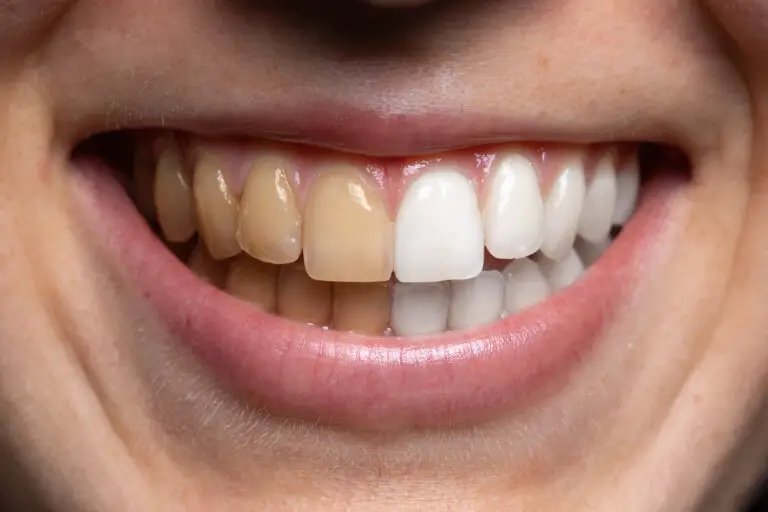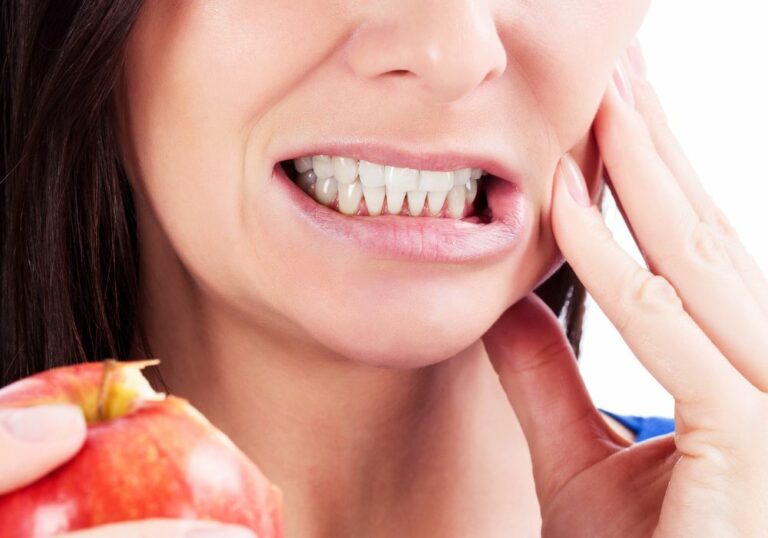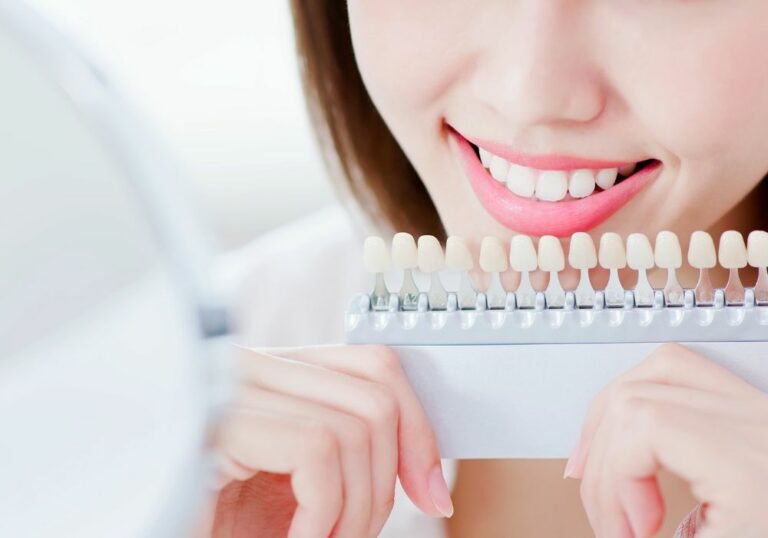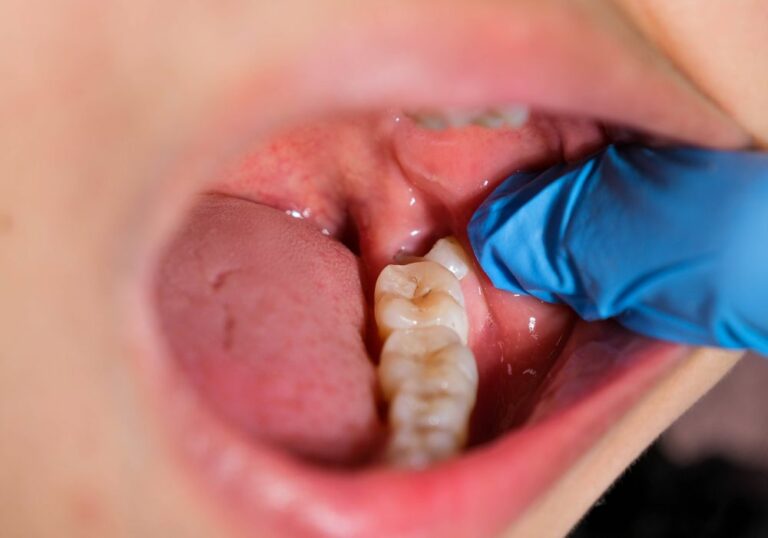Having teeth suddenly crack, break, or crumble when eating or drinking can be alarming. You may notice small chips appearing in your teeth, sensitivity to hot and cold, or even expose dark decay holes on tooth surfaces. These issues not only cause pain, but can negatively impact your smile and self-confidence.
It’s normal for teeth to show some wear and tear as we age. But extensive tooth structure loss results from a combination of longstanding dental problems, improper care, and habitual behaviors.
Fortunately, the causes of such severe dental destruction are usually identifiable. With prompt treatment and good home care, progression of damage can be halted and your smile restored. This article explores common reasons for tooth decay and breakage and steps you can take to turn things around.
Causes of tooth decay and breakage
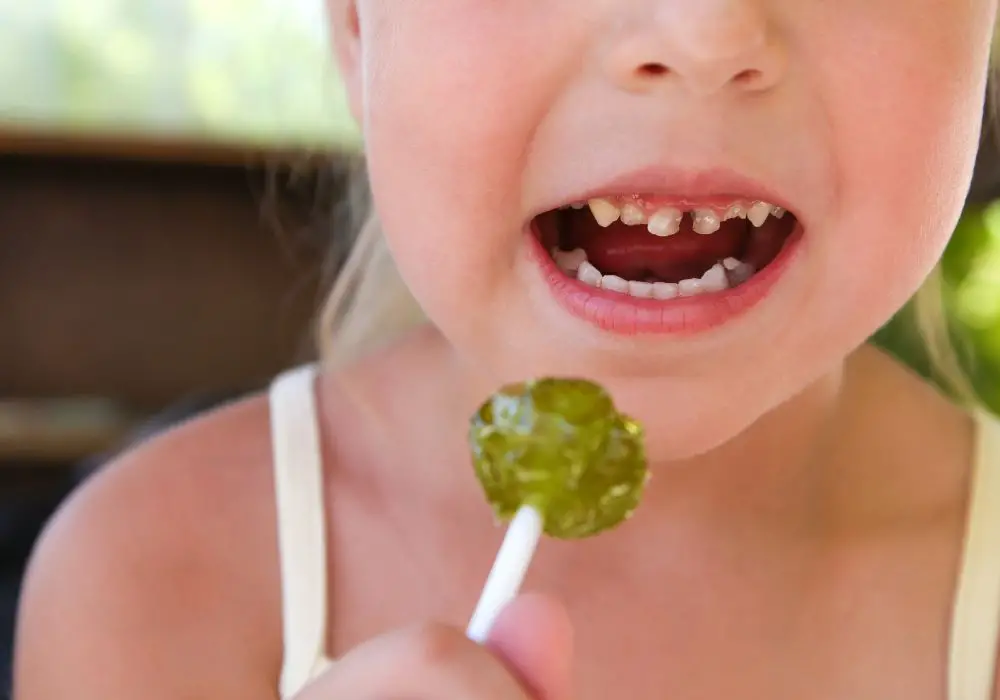
There are several potential reasons teeth may rot, decay or break off over time.
1. Poor oral hygiene
Not properly brushing and flossing allows plaque (a sticky film of bacteria) to build up on teeth. With poor oral hygiene, plaque can accumulate along the gumline and in between teeth. The bacteria in plaque feast on leftover food particles and release acids as a byproduct. These acids dissolve tooth enamel leading to cavities.
Cavities form when the enamel is worn away and decay reaches the softer dentin layer underneath. Unchecked, cavities become larger, deeper holes penetrating into the tooth pulp. This causes severe pain and sensitivity. Without treatment, an abscess may form and the tooth will rot away.
Advanced tooth decay undermines the structural integrity of the tooth. It becomes weaker and more prone to cracking under the forces of normal chewing. Pieces may chip off or entire cusps can fracture off at the gumline.
Tips for better oral hygiene:
- Brush teeth thoroughly twice per day with a soft-bristled fluoride toothpaste
- Angle the toothbrush bristles at a 45 degree angle towards the gums
- Use gentle circular motions when brushing
- Take time to brush along the gumline and hard-to-reach back molars
- Replace your toothbrush every 3-4 months or sooner if frayed
- Floss between teeth daily using a gentle sawing technique
- Swish with an antibacterial mouthwash to reduce bacteria
- Visit the dentist regularly for professional cleanings
2. Acidic foods and drinks
Beverages like sodas, sports drinks, and fruit juices contain acids such as citric acid and phosphoric acid. Prolonged contact between acidic drinks and teeth can erode and dissolve the enamel over time. This is because the minerals that strengthen enamel (calcium and phosphate) are soluble in acid.
Sipping acidic drinks continuously throughout the day bathes teeth in acid. This leads to loss of tooth structure. The more frequently you consume acidic beverages, the greater your risk of enamel erosion. As enamel wears away, teeth become sensitized and prone to decay. Acids also roughen the normal glossy surface of enamel, making it easier for bacteria to adhere.
Hard candies, citrus fruits, and vinegar are also highly acidic. The acidic effects linger in the mouth especially if proper oral hygiene is not practiced after eating.
Ways to minimize acid damage:
- Limit acidic food and drink consumption to meal times
- Avoid swishing or holding acidic drinks in mouth for prolonged periods
- Rinse mouth thoroughly with plain water after consuming acidic foods/drinks
- Chew sugar-free gum after eating to neutralize acids and stimulate saliva
- Wait at least 30 minutes before brushing after acidic exposures to avoid scrubbing weakened enamel
- Drink acidic drinks through a straw pointed towards the back of the mouth
- Opt for water or milk instead of soda, juices, wine, etc.
3. Grinding and clenching
Grinding or clenching of the teeth, also called bruxism, places tremendous sideways and compressive forces on teeth. This can literally crack teeth and break them into pieces. It also rapidly wears down the chewing surfaces of teeth, making them weaker and more prone to decay.
People are often unaware they grind or clench as it commonly occurs during sleep. Tell-tale signs include sore facial muscles upon waking, chipped or flattened teeth, increased tooth sensitivity, and headaches. Grinding and clenching worsens with stress, anxiety, sleep issues, and certain medications. People may clench in concentration during daytime activities. Mouthguards help shield teeth from grinding damage.
Strategies for addressing bruxism:
- Have dentist fit you for a custom nightguard to wear during sleep
- Undergo a sleep study to determine if you have apnea that may be causing bruxism
- Avoid eating late at night right before bedtime
- Manage stress through yoga, meditation, counselling, or other relaxation techniques
- Get treatment from dentist for misaligned bite or crooked teeth
- Do jaw stretches and massages throughout day to release tension
- Avoid alcohol and caffeine several hours before bedtime
- Treat pain with over-the-counter pain medication or prescription muscle relaxants
4. Poor diet
Frequent consumption of refined carbohydrates and sugary foods creates an optimal environment for cavities. Starchy foods like bread, crackers, and pasta linger and stick to tooth surfaces. Bacteria flourish on these remnants and produce abundant acid. Hard candies also adhere to teeth surfaces promoting decay.
Sugars found naturally in fruit, dairy, and other foods can also damage teeth. But added sugars in processed foods, sweet treats, fizzy drinks have the most detrimental effects. They feed bacteria already present in dental plaque.
Each time you eat or drink sugary foods, acids attack tooth enamel for about 20 minutes before saliva neutralizes the pH in the mouth. If sugar is consumed consistently throughout the day, teeth endure repeated acid assaults without recovery time.
Malnutrition also diminishes tooth strength and health. Important vitamins and minerals like calcium, phosphorus, and Vitamin D are required for proper enamel formation and maintenance. Deficiencies in these nutrients during tooth development can result in weaker enamel prone to chipping and breakage later in life.
Dietary changes for healthier teeth:
- Limit sugary snacks and drinks
- Avoid sipping on sweetened beverages for prolonged periods
- Rinse mouth with plain water after consuming sweets
- Focus diet on fruits, vegetables, lean proteins, nuts, dairy
- Choose sugar-free gum or mints to increase saliva flow after meals
- Take a calcium and Vitamin D supplement if deficient in these nutrients
- Drink tap water instead of bottled water to obtain fluoride
Dental issues that can cause tooth breakage
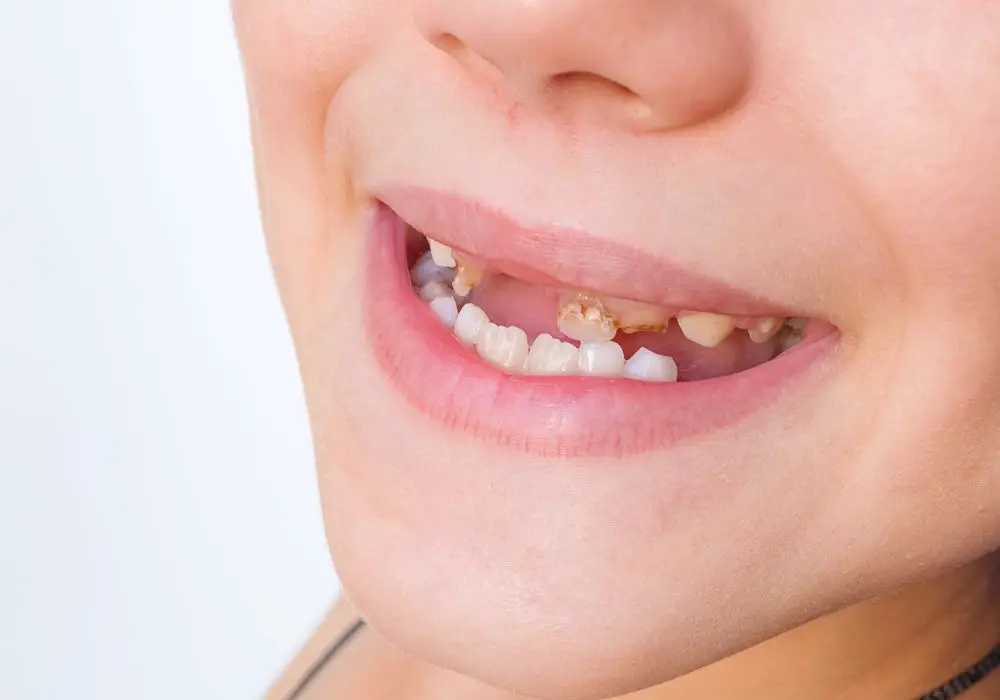
In some cases, underlying dental problems, diseases, or treatments may weaken teeth structure and make teeth more prone to cracking and breaking under pressure.
1. Large fillings
Silver amalgam and composite fillings are used to repair holes formed by tooth decay. But removing decayed tooth structure and replacing it with filling material weakens the overall strength of the tooth. The more extensive the decay, the larger the filling required.
Larger older fillings are more likely to pop out, fracture the surrounding tooth, or lead to new decay around edges of the filling. This leaves the tooth even more compromised.
2. Dental trauma
Injuries that chip, crack, or displace teeth put them at immediate risk of further damage both at the time of injury and later on. The location and direction of force impacts how severely teeth are affected. Front teeth are commonly injured.
Seeking emergency dental care right away after a mouth injury gives the best chance of saving injured teeth. A dentist will check for loose or displaced teeth, broken fragments, cracked enamel, root damage, and concussions. Stabilization with splints may be required. Restorations like crowns or veneers help protect and strengthen injured teeth long-term.
3. Cracked tooth syndrome
Unseen cracks can develop in teeth from chewing excessively hard foods like nuts or ice, bruxism, or dental trauma. Cracked teeth may initially be asymptomatic. But as the cracks deepen over weeks and months, pain and sensitivity when chewing or with hot/cold stimulation occurs.
At first, the cracks may be too small to be visible on dental x-rays. Eventually they propagate through the tooth until distinct segments separate. By this stage, the fracture cannot be saved by crowns or restorations and extraction is required.
4. Bruxism treatments
Dental devices like nightguards are commonly used to protect teeth from damage caused by grinding and clenching. But over time, ill-fitting or overused nightguards may actually increase the likelihood of fractures. The reasons are multifold.
First, a mouthguard worn every night for months on end prevents natural wearing of the teeth. This leads to unequal pressures on tooth surfaces and cracks. Second, grinding forces can eventually overwhelm the plastic and transfer damaging forces to the teeth. Lastly, bruxism is exacerbated if the habit is subconsciously reinforced by the presence of a nightguard.
5. Endodontic treatment
Root canal treatment, also called endodontic therapy, removes inflamed or infected pulp material in the inner chamber of the tooth. The remaining tooth is structurally weakened by loss of the inner nerve and blood supply. Without placement of a crown or other restoration, the tooth becomes brittle and 4 to 6 times more likely to fracture. The tooth also darkens making the loss of structure more apparent.
6. Excessive wear
Worn down teeth due to erosion, abrasion, or attrition can cause thinning of enamel and expose tender underlying dentin. This causes sensitivity and pain when chewing. The teeth become weakened and more likely to chip or break from normal masticatory forces. The teeth may appear small, transparent and possess sharp edges. The increased risk persists until lost enamel and dentin is restored.
7. Periodontal disease
Chronic untreated gum disease damages the bony socket and periodontal ligaments anchoring the tooth in place. The tooth loses its foundational support and becomes loose. It is then more prone to fracture when chewing. Advanced periodontal disease also provides deeper pockets around the tooth where more bacteria and plaque accumulate accelerating local decay.
Steps to help stop tooth breakage
If you are suffering from multiple broken, cracked, or fractured teeth, there are steps you can take:
- Schedule a comprehensive dental exam – A full assessment is needed to uncover any underlying dental issues contributing to the fractures like gum disease, bruxism, etc. Digital dental x-rays and cone beam CT scans help visualize cracks.
- Stabilize mobile, painful teeth – Splinting, bite adjustments, or temporary smoothing of sharp edges may provide relief before more definitive treatment.
- Restore extensively damaged teeth – Dental crowns strengthen and protect fractured teeth from further damage when placed soon after injury. They encompass the entire tooth and required for teeth treated with a root canal.
- Extract non-restorable teeth – Teeth too severely decayed or broken beyond repair require extraction. Replacement with bridges, partial dentures, or dental implants can restore chewing function.
- Nightguards and occlusal splints – These appliances protect teeth from grinding forces and stabilize the bite to prevent cracking. Regular use is key.
- Monitor and address bruxism – Sleep studies, biofeedback, stress reduction, and medication can help manage grinding and clenching.
- Follow home care guidelines – Don’t chew hard foods/ice. Avoid sticky candies that pull on damaged teeth. Maintain excellent oral hygiene.
When to see a dentist
You should make an appointment with your dentist right away if you notice any of the following signs:
- A cracked, fractured or chipped tooth
- Significant pain when chewing or with hot/cold stimulation
- Visible holes, breaks or dark spots on the teeth
- Teeth that appear worn, smaller or transparent
- Teeth that feel loose or have changed position
The sooner tooth injuries, decay and breakdown are professionally evaluated, the better the chances of saving affected teeth and preventing additional damage. Depending on findings, your dentist will recommend appropriate treatment which may involve crowns, root canals, occlusal adjustment, or extraction for non-restorable teeth.
Outlook and prevention
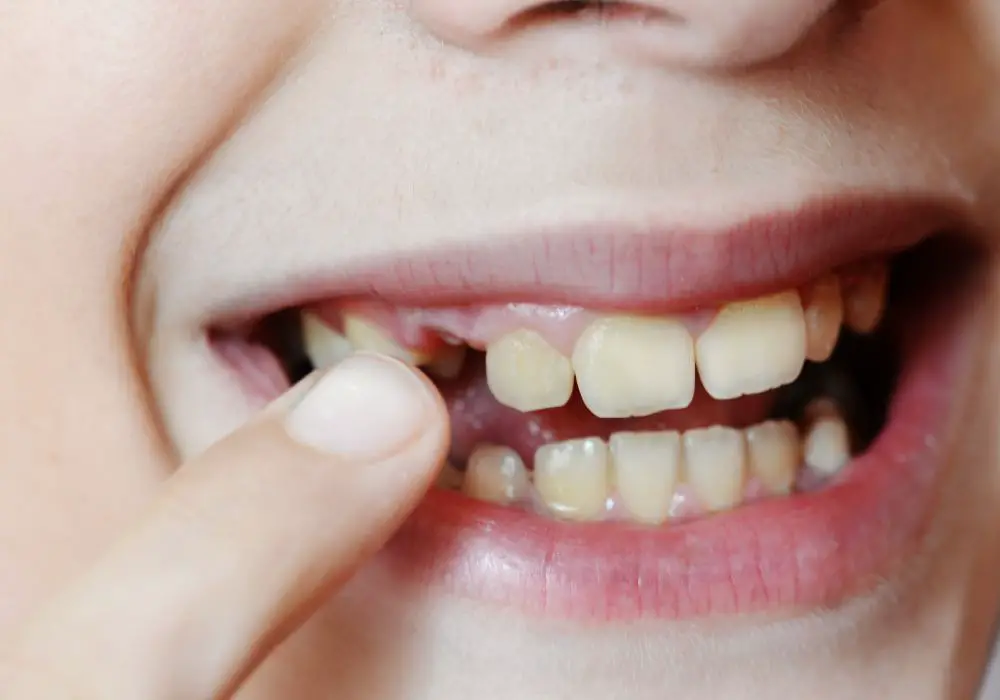
Repeated tooth breakage can be alarming but is usually manageable with prompt dental care and modifications to diet and daily oral hygiene routine. With diligent brushing, flossing, dental visits and limiting tooth-damaging habits like ice chewing and clenching, progression of damage can be halted. Adequate intake of calcium and fluoride further strengthens enamel.
Follow all of your dentist’s home care advice for protecting compromised teeth between appointments. Annual dental cleanings are important for early detection of decay. Maintaining excellent oral hygiene and making smart dietary choices give you the best chance of keeping natural teeth intact for life. Proper care of teeth and gums is the optimal way to prevent pain, expensive dental treatments, and tooth loss as you age.
Frequently Asked Questions
What are some early warning signs of tooth decay?
Some early signs of tooth decay include:
- White spots on tooth enamel
- Pitted, rough, or discolored enamel
- Brown or black stains on teeth near the gums
- Pain or sensitivity when eating sweets or hot/cold foods
- Persistent bad breath
At the first signs of decay, make an appointment to see your dentist before a problematic cavity develops. Early decay can often be arrested and reversed with topical fluoride treatments.
Why do teeth break more as I get older?
Aging causes teeth to break more easily for several reasons:
- Enamel thinning from decades of acidic wear and tear
- Receding gums from brushing abrasion or periodontal disease expose delicate root surfaces
- Accumulation of smaller cracks in teeth from lifelong chewing stresses
- Loss of bone density in the jaw from osteoporosis
- Presence of old, large fillings that further weaken the remaining tooth structure
- Increased incidence of chronic dry mouth which accelerates decay
Can broken teeth be saved or repaired?
Minor chips and cracks can often be restored with composite resin fillings or dental bonding. Moderately damaged teeth may be candidates for crowns if the tooth pulp remains healthy. Significantly broken teeth with advanced decay or pulp involvement will require root canal treatment. For teeth fractured below gumline, extraction is generally necessary.
Dental implants now provide an excellent option to replace single severely damaged teeth or multiple missing teeth. Implants fuse securely into the jawbone like natural tooth roots and support realistic looking porcelain crowns.
How can I strengthen my teeth and prevent fractures?
To strengthen teeth and avoid fractures:
- Brush and floss thoroughly each day
- Use fluoridated toothpaste and fluoride rinses
- Limit snacking frequency and consume sugary/acidic foods only with meals
- Wear a custom nightguard if you grind your teeth
- Have old fillings replaced and cracked teeth restored promptly
- Maintain regular 6 month dental cleanings and exams
What causes teeth to wear down over time?
Common reasons for tooth wear include:
- Erosion from frequent exposure to acidic foods and drinks
- Attrition from tooth grinding, malocclusion, missing teeth, etc.
- Abrasion from overzealous brushing, abrasive toothpaste, oral piercings
- Abfraction from concentrated stresses such as aggressive clenching
- Loss of protective enamel covering from aging

